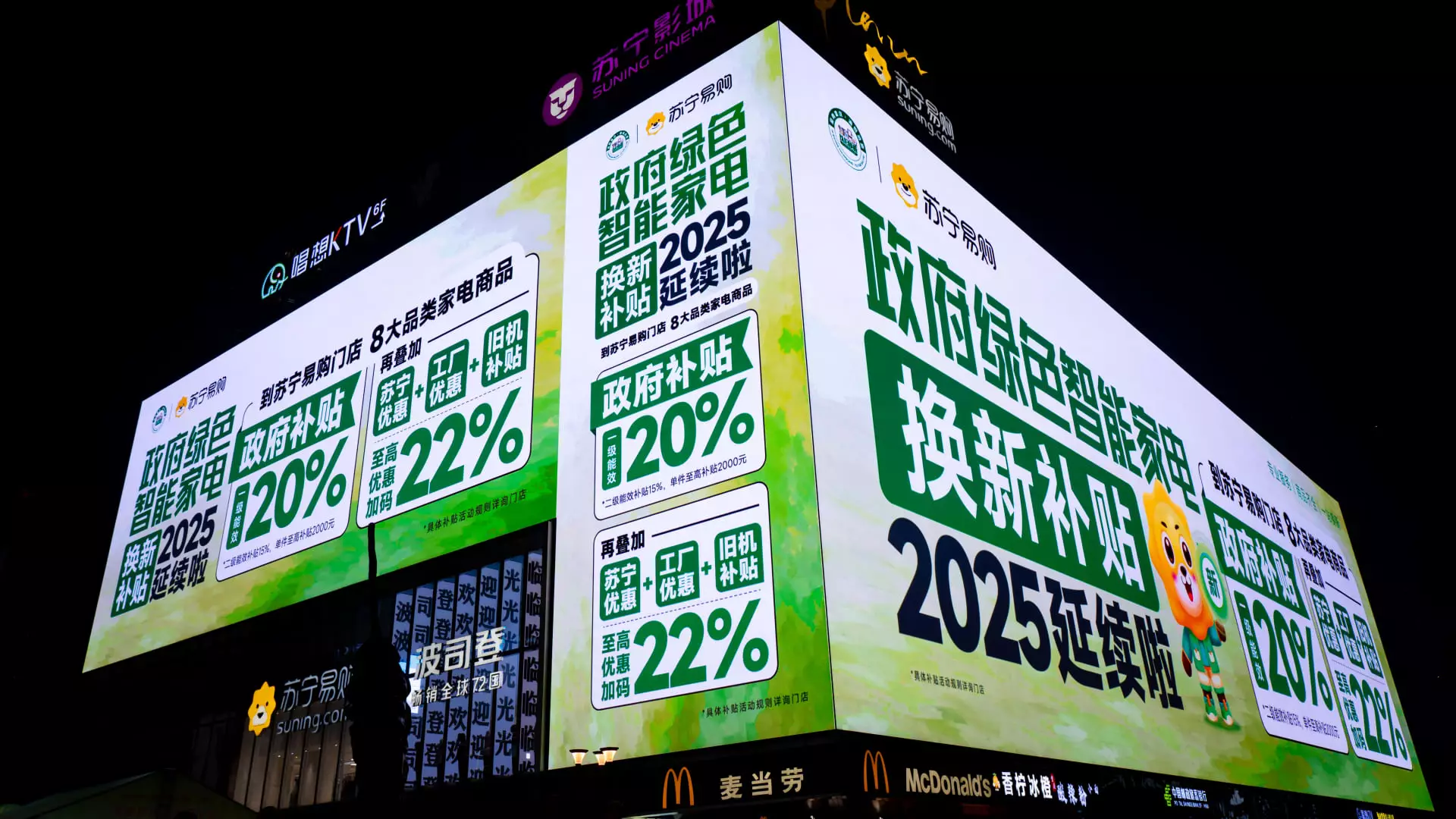China’s economic landscape is entering a new phase as the government rolls out a consumer stimulus program for 2025. This initiative aims to reinvigorate subdued consumer spending in a country still grappling with the lingering effects of the pandemic. Analysts project that this program will particularly benefit select stocks within the home appliance sector, which has been bolstered by government-backed subsidies. This article delves into the implications of this new policy and its expected impact on key players in the market.
In a marked departure from conventional stimulus methods, the Chinese government has opted not to distribute cash payments directly to consumers. Instead, since the latter part of summer 2024, it has implemented a subsidy program focused on home appliance purchases. Specifically, consumers looking to upgrade their home appliances can trade in older models to receive subsidies of up to 20% off the retail prices of new items. Recently, the list of eligible products was expanded, now including essential items such as microwaves, water purifiers, and dishwashers. This innovative approach aims not only to stimulate consumer demand but also to drive growth in the domestic manufacturing sector.
Morningstar equity analyst Jeff Zhang highlights that leading manufacturers in the home appliance segment—including Midea, Gree, and Haier—are poised to gain substantially from this stimulus program. These companies dominated the air conditioning market in 2024, and Zhang has raised revenue forecasts for them by 2% to 5% through 2028, anticipating increased sales as consumers seize the opportunity to upgrade their appliances.
Midea’s stock performance has already shown promise, with shares soaring nearly 38% last year. Analysts predict a further increase of around 26% for this stock based on updated price targets. Similarly, Haier’s shares experienced a 29% rise but still hold a significant upside potential of nearly 48%. Gree also reported a nearly 50% increase in share prices last year, suggesting a collective market confidence in these manufacturers that is likely to grow as consumer purchasing picks up.
Despite the optimistic outlook, analysts from Citigroup express caution regarding potential obstacles. Price wars, aggressive competition, and the continuing weakness in China’s real estate market might negatively influence stock performance. The recent data reflecting a 3.3% decline in home appliance prices year-over-year exemplifies the current challenges facing the sector. Consumer sentiment remains cautious, likely driven by uncertainty over future income streams and economic stability.
Furthermore, with China set to release its retail sales and GDP figures shortly, the economic indicators will provide deeper insight into the effectiveness of the newly implemented stimulus measures. Initial reactions indicate that while the government has allocated substantial resources—around 81 billion yuan ($11.05 billion) for subsidies through the Spring Festival—the overall impact will ultimately depend on broader market conditions.
The consumer stimulus initiative extends its reach into the e-commerce sector, with major platforms like JD.com and Alibaba positioned to benefit significantly. JD.com, in particular, has been singled out by Citi analysts for its strategic alignment with the trade-in subsidy program. With a solid infrastructure in place and expertise in electronics and appliance sales, JD.com is set to capitalize on the anticipated surge in demand.
Similarly, Alibaba’s Tmall platform, known for its affiliation with major brands, is expected to generate substantial sales as consumers look to purchase subsidized products. With product overlap increasing across various e-commerce platforms, these companies will likely compete aggressively to capture market share.
However, PDD (Pinduoduo) is expected to lag behind the competition in benefiting from the stimulus program, as its focus is less aligned with home appliances and more on agricultural goods.
The implementations of the consumer stimulus program mark crucial steps toward revitalizing China’s economy following a period of stagnation. While initial forecast shifts for key players like Midea, Gree, and Haier indicate a positive trajectory, the success of these initiatives will rely heavily on the adaptability of both manufacturers and retailers in navigating potential risks. The upcoming economic reports will be pivotal in determining the lasting effects of these policies on consumer behavior and, by extension, the overall economic recovery strategy.

